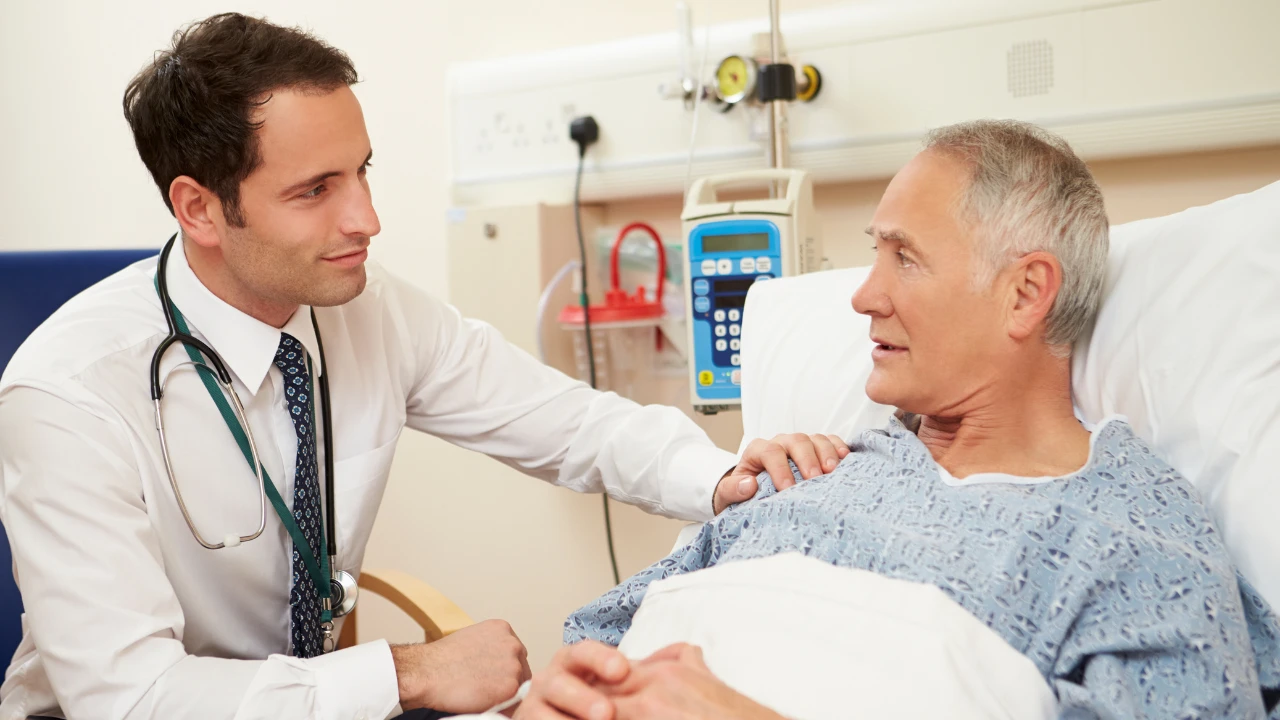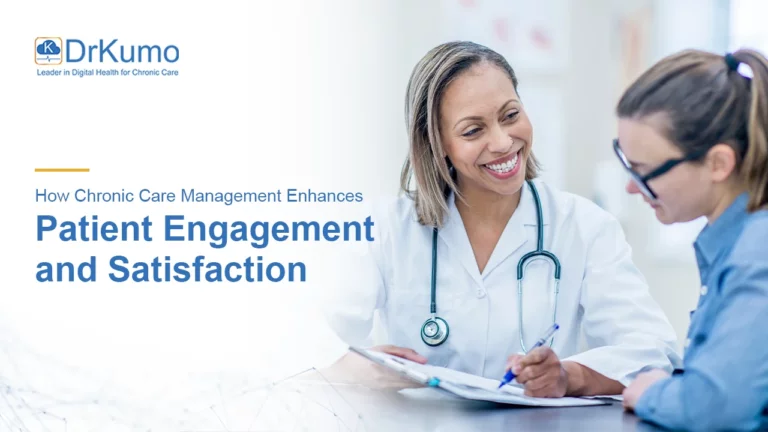Patients with chronic conditions such as congestive heart failure (CHF) and hypertension are often monitored through periodic office visits and self-reported logs. While this approach has been the traditional standard, it carries limitations. Important changes—such as rapid weight gain, which may indicate fluid overload—can be missed between visits, sometimes leading to hospitalization. This underscores the challenges of a reactive care model that addresses problems only after they arise.
With Remote Physiologic Monitoring (RPM), connected devices such as scales and blood pressure monitors can send daily readings directly to the care team. When significant changes are identified, clinicians can respond earlier by scheduling a telehealth visit and adjusting treatment, which may lower the risk of hospitalization.
RPM supports a shift in chronic disease management from episodic and reactive approaches to more continuous, data-informed, and patient-centered care. Beyond the technology itself, RPM represents a clinical workflow strategy that enables providers to monitor patients between visits and respond more quickly to changes in health status. This article defines RPM, explores its technology and evidence base, addresses implementation challenges, and looks ahead to innovations like AI and next-gen biosensors that may shape the future of remote care.
What Is Remote Physiologic Monitoring (RPM)
To understand the clinical and operational value of RPM, it is important to define what RPM is, how it differs from other digital health modalities, and the key components that make up a complete system. This foundational knowledge helps clinicians, administrators, and health IT leaders implement RPM effectively in practice.
A Clinical Definition: What RPM Is (and Is not)
Remote Physiologic Monitoring (RPM) refers to healthcare services that collect and review patient physiologic data such as weight, blood pressure, glucose, oxygen saturation, and heart rate to support the management of chronic or acute conditions. These data are transmitted digitally from FDA-cleared medical devices to the care team, enabling clinicians to make timely adjustments to the care plan without requiring in-person visits.
This distinction separates clinical-grade RPM from consumer self-monitoring and establishes the basis for reimbursement under Medicare and other payers. RPM is intended to support proactive management of patient health and has been associated in studies with improved outcomes and reduced hospitalizations.
The Digital Health Ecosystem: RPM vs. RTM vs. Telehealth
The digital health landscape includes multiple related but distinct modalities, and clear definitions are essential to avoid confusion in clinical use and reimbursement. Understanding the differences between Remote Physiologic Monitoring (RPM), Remote Therapeutic Monitoring (RTM), and telehealth is critical for correct implementation and reimbursement. CMS reimbursement policies set the boundaries: RPM data must be collected via FDA-cleared medical devices and digitally transmitted, distinguishing reimbursable clinical monitoring from consumer wellness apps.
- Remote Physiologic Monitoring (RPM): Tracks objective physiologic data (e.g., weight, blood pressure, oxygen saturation). Data must be digitally collected and automatically uploaded; patient self-report alone does not meet requirements under core RPM codes
- Remote Therapeutic Monitoring (RTM): Captures non-physiologic data, such as adherence, pain levels, or respiratory status. Unlike RPM, RTM codes allow self-reported data, recognizing behavior and symptom tracking as clinically valuable.
- Telehealth: It refers broadly to digital care delivery modalities such as video visits, phone calls, and secure messaging. RPM and RTM are distinct services that complement telehealth but are not classified by CMS as telehealth visits. Instead, they are defined as remote monitoring and management services, with separate reimbursement policies.
A comparison table (below) highlights these differences at a glance.
| Feature | Remote Physiologic Monitoring (RPM) | Remote Therapeutic Monitoring (RTM) | General Telehealth |
|---|---|---|---|
| Primary Definition | Monitoring of objective physiologic data for treatment management. | Monitoring of non-physiologic data related to a therapeutic response. | Broad delivery of remote clinical services and health education. |
| Data Type | Vital signs (e.g., blood pressure, glucose, weight, SpO2). | Therapeutic data (e.g., medication adherence, pain levels, respiratory/musculoskeletal status). | N/A (service-based, not data-type specific). |
| Data Input | Must be digitally and automatically transmitted by the device. | Can be patient self-reported via the device. | N/A (typically involves live interaction or messaging). |
| Example | A connected blood pressure cuff for a patient with hypertension. | A smart inhaler tracking usage and response for an asthma patient. | A live video consultation with a dermatologist. |
| Governing Codes | CPT Codes 99453, 99454, 99457, 99458, 99091. | CPT Codes 98975, 98977, 98980, 98981. | Varies widely by service type and payer policy. |
Core Components of an RPM System: The Four Pillars
A scalable RPM program relies on four core components that move data from the patient’s home to the clinician’s workflow:
- Pillar 1: Patient Monitoring Device – FDA-approved medical devices that capture and digitize physiologic data (e.g., blood pressure, weight).
- Pillar 2: Patient-Side App or Hub – A smartphone app or cellular-enabled hub that transmits device data. Interfaces should be designed for usability to support patient engagement and reduce barriers.
- Pillar 3: Secure Cloud Repository – A HIPAA-compliant, encrypted, cloud infrastructure that stores and processes large volumes of patient data.
- Pillar 4: Provider-Side Platform – A clinical portal for reviewing data, identifying significant trends, and managing alerts, ideally integrated with the electronic health record (EHR).
Together, these components establish the infrastructure required for an effective RPM program that supports clinical care and billing requirements.
The Technology in Practice: Devices and Data Flow
The success of an RPM program depends on reliable, clinically validated devices tailored to chronic conditions:
- Blood Pressure Cuff – Widely used in hypertension, CHF, and CKD management. Home monitoring provides a broader picture of blood pressure trends compared with isolated office readings and can help identify “white coat” or “masked” hypertension.
- Glucometer / CGM – Connected glucometers transmit fingerstick results for provider review, while continuous glucose monitors (CGMs) provide ongoing glucose trend data, illustrating how diet, activity, and medication influence glycemic control.
- Pulse Oximeter – Pulse oximeters measure oxygen saturation (SpO₂) and heart rate, supporting management of COPD, asthma, CHF, and post-illness recovery. Declines in SpO₂ can serve as an early indicator of potential clinical deterioration.
- Smart Scale – Crucial for CHF patients. Rapid weight gain may indicate fluid retention, allowing clinicians to consider timely adjustments in therapy.
- ECG Devices – Portable or wearable ECG devices support arrhythmia detection, such as atrial fibrillation, by recording and transmitting cardiac data for clinical review.
- Peak Flow Meter / Spirometer – Measures lung function in asthma or COPD, helping track progression and detect early exacerbations.
The following table summarizes these common devices and their primary clinical applications.
| Device | Physiologic Data Collected | Primary Clinical Application(s) |
|---|---|---|
| Blood Pressure Cuff | Systolic/Diastolic Blood Pressure, Heart Rate | Hypertension, Congestive Heart Failure (CHF), Chronic Kidney Disease |
| Glucometer / CGM | Blood Glucose Levels | Type 1 & Type 2 Diabetes |
| Pulse Oximeter | Blood Oxygen Saturation (SpO2 ), Pulse Rate | COPD, COVID-19, CHF, Asthma, Pneumonia |
| Smart Scale | Weight | Congestive Heart Failure (CHF), Post-Surgical Recovery, Obesity Management |
| ECG | Heart Rhythm / Electrical Activity | Atrial Fibrillation, Arrhythmias, Post-Myocardial Infarction |
| Spirometer / Peak Flow Meter | Respiratory Flow Rate, Lung Capacity | Asthma, COPD, Cystic Fibrosis |
The Journey of RPM Data: From Patient to Provider
RPM data moves through four key stages designed for security and clinical value:
- Data Collection – Patients use FDA-cleared devices to record physiologic measurements. Depending on the device, readings may be automatically transmitted or require a simple patient action.
- Secure Transmission – Readings are sent via cellular modem or Bluetooth hub to a secure, HIPAA-compliant cloud platform, with encryption protecting PHI.
- Aggregation & Analysis – Incoming data are stored alongside historical readings to enable trend monitoring. Thresholds, set by providers or default parameters, can generate alerts when values fall outside predefined ranges.
- Integration & Presentation – Providers access trends and alerts through portals or, ideally, directly within the EHR. FHIR standards support interoperability, streamline workflows, and prevent data silos.
Ensuring Clinical Trust: The FDA’s Regulatory Role
For clinicians to rely on RPM data, device accuracy and safety must be verified through regulation. The FDA provides this oversight through its medical device regulatory framework.
- Device Classes – Class I (low risk, e.g., bandages), Class II (moderate risk, e.g., blood pressure cuffs, glucometers, pulse oximeters), and Class III (high risk, e.g., pacemakers). Most RPM devices fall under Class II.
- 510(k) Clearance – Most RPM devices are cleared through the FDA’s 510(k) pathway, which requires manufacturers to demonstrate that a new device is substantially equivalent in safety and effectiveness to an existing legally marketed device.
- Evolving Policy – To foster innovation, the FDA now allows limited updates (like wireless features or home-use expansion) to already-cleared devices without requiring a new 510(k).
This regulatory framework is designed to balance safety, reliability, and innovation, supporting clinician confidence in using RPM devices for patient care.
The Clinical Impact: Applications and Benefits
Studies suggest that RPM can improve chronic disease management by enhancing patient outcomes and reducing healthcare use and costs. It enables more frequent monitoring between visits, allowing for proactive rather than reactive care.” and insert corresponding reference
Chronic Disease Applications
- Hypertension – Frequent home blood pressure readings support better control and medication adjustment.
- Heart Failure –In heart failure, daily weight and blood pressure monitoring can help identify signs of fluid retention, allowing clinicians to intervene earlier to reduce the risk of decompensation.
- Diabetes – Connected glucose monitoring (glucometer or CGM) generates actionable data that clinicians can use to optimize therapy and support patient self-management.
- COPD – Monitoring oxygen saturation and respiratory function may help detect exacerbations earlier, supporting timely treatment adjustments and potentially reducing hospitalizations.
Beyond Chronic Care
PM applications are extending beyond chronic disease into areas such as post-acute recovery, high-risk obstetrics, oncology, and pediatrics. While the evidence base is still developing, early research suggests that RPM can support recovery, reduce readmissions, and enhance patient engagement in select populations.
Quantified Value
RPM reduces readmissions significantly. According to MD Revolution and Cardiac Solutions (2024), 26,000 patients showed a 50% drop in 30-day readmissions. Beyond outcomes, RPM fosters engagement, expands access to rural populations, and creates major cost savings, with estimates of shifting $265 billion of care to the home. This proactive model aligns with value-based care principles, which emphasize prevention, population health, and efficiency in resource utilization.
DrKumo: Leading the Next Wave of RPM
DrKumo provides advanced Remote Patient Monitoring solutions designed to support both patients and providers. Its platform stands out by combining:
- Continuous Real-Time Monitoring – Patients use FDA-cleared devices to record physiologic data, which are transmitted digitally for clinical review.
- AI-Driven Insights – Intelligent analytics help detect early warning signs, triage risk, and reduce alert fatigue for providers.
- Ease of Use – The system is designed to support patient engagement, with simplified interfaces to help reduce barriers such as limited digital literacy.
- Security & Compliance – End-to-end encryption and full HIPAA compliance safeguard patient data.
- Value-Based Alignment – The platform supports documentation and reporting workflows for RPM reimbursement, consistent with CMS requirements, while enabling proactive patient management.
By combining patient-friendly technology, scalable clinical workflows, and data analytics, DrKumo’s platform is designed to support connected care models that enhance patient monitoring and streamline provider workflows.
Takeaways
RPM has moved beyond pilot programs and is now a practical, scalable tool increasingly integrated into healthcare delivery. By enabling more frequent, data-driven monitoring, RPM extends clinical visibility into the home and supports earlier interventions. Evidence suggests RPM can support chronic disease management, improve patient engagement, and contribute to cost savings in some populations, while aligning with the principles of value-based care.
As RPM technology evolves with AI, predictive analytics, and advanced biosensors, its potential applications are expected to expand. Companies like DrKumo are at the forefront of this transformation, offering real-time, secure, and patient-friendly solutions that reduce barriers to adoption and support scalable clinical workflows. Together, these advancements point toward a future where care is more proactive, personalized, and accessible—bringing healthcare directly to where patients live.
Discover how DrKumo’s RPM solutions can help your practice improve outcomes, streamline workflows, and maximize value-based care. Contact us today to get started.
Disclaimer: This article is for informational and educational purposes only and should not be interpreted as medical or legal advice. Remote Physiologic Monitoring (RPM) programs must comply with applicable laws, regulations, and payer policies. Clinicians should rely on their own professional judgment and consult regulatory guidance before implementing RPM solutions.








